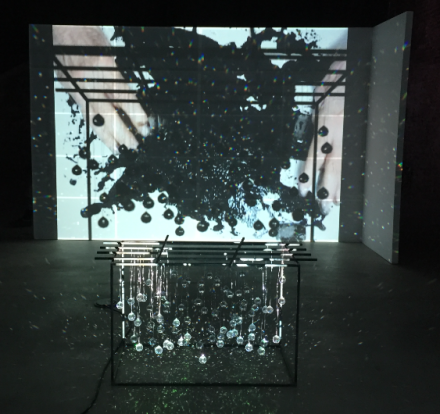
Joan Jonas, What is Found in the Windowless House is True (Installation View), via Art Observed
Taking over almost the full expanse of Gavin Brown’s impressive Harlem exhibition space, artist Joan Jonas returns to New York with a body of work in tow that mingles previous explorations and new meditations on man’s relationship with the natural world. Pulling the viewer along a meandering pathway up through the gallery’s multi-floor exhibition space, Jonas’s work greets the viewer with visual twists and turns of their own, each time dwelling on the act of perception and understanding, natural phenomena and man’s modern contexts.
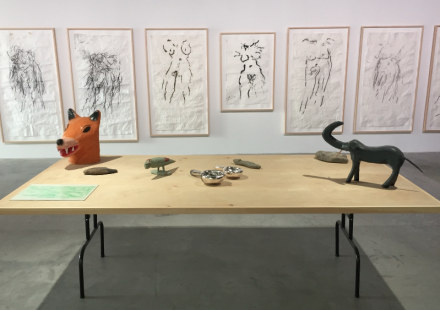
Joan Jonas, What is Found in the Windowless House is True (Installation View), via Art Observed
In part, the show is a reprisal of Jonas’s previous work for the U.S. Pavilion at the 2015 Venice Biennale, a piece delving into the world’s current ecological condition, one where the relationships and fates of human, animal and plant agents are increasingly intertwined. Various documentations and select video works are spread throughout the space, exploring momentary glimpses of the performance liberated from their chronological progression, and allowed to freely interact across multiple screens and exhibition spaces. This is echoed on the ground floor, where a collection of objects used throughout both performances of the work in Venice and last year at the Kitchen in New York are on view.
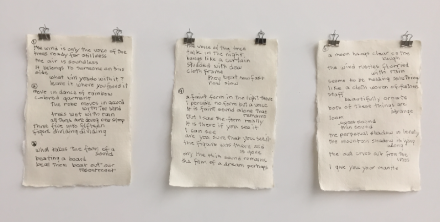
Joan Jonas, What is Found in the Windowless House is True (Installation View), via Art Observed
Jonas presents her own work as bound up in this same world, her own hand occasionally disappearing into the environs she performs within or alongside, often allowing the natural imagery to intersect with deftly overlaid images and multi-screen projection set-ups. In one video, a performer sits, tracing lines down a sheet of paper, dressed in all-white. A video projected over the performer shows Jonas herself, holding her body in a series of poses that graft her own image over the performer’s. It’s an exercise in fluidity and identity, creating sites where the interchangeability of spaces and times opens up an engagement with space, and with the viewer’s own perception, as equally fluid. In another, the silhouettes of various birds are used to trace their forms on massive sheets of paper, presented here as a series of large-scale charcoal and oil stick works. Jonas’s work moves across a series of states and forms, always incorporating new actions and elements in a manner that seems to pull each action away from its original performance/production, and into a multi-layered engagement with action and time itself.
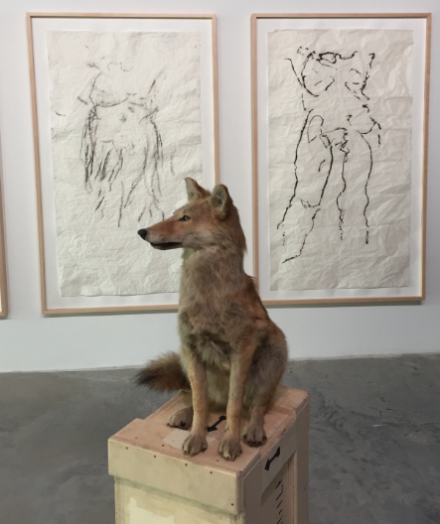
Joan Jonas, What is Found in the Windowless House is True (Installation View), via Art Observed

Joan Jonas, What is Found in the Windowless House is True (Installation View), via Art Observed
Yet at its core, Jonas’s relationship to the world around her is always foregrounded. The work pulls from the presence of animals, trees, and a distinctly rustic materiality (in one work, performers use what appears to be chicken coop wire-mesh as a performative element) to emphasize a connection with nature, and a prompt for viewers to look ever harder at their experience with the natural world. Jonas’s pieces are a lingering engagement with land, with the grassy expanses and towering tree canopies so often obscured from the language of modern life. Presented here, in a space that still feels somewhat caught between a state of natural decay and renewal, her work hints at a circular sense of life and death.
Her work is on view through June 11th.
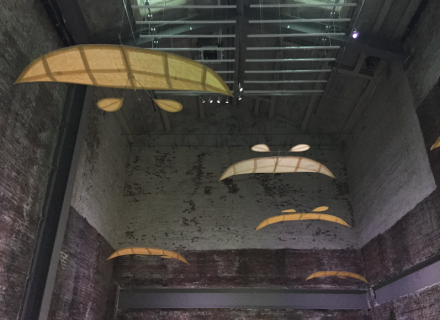
Joan Jonas, What is Found in the Windowless House is True (Installation View), via Art Observed
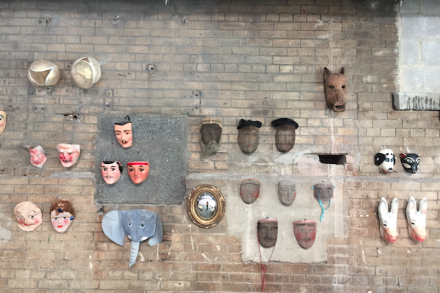
Joan Jonas, What is Found in the Windowless House is True (Installation View), via Art Observed
— D. Creahan
Read more:
Joan Jonas at Gavin Brown [Exhibition Site]



